Coneflower and tower power at the Wildflower Center
Evening hours last Thursday at the Lady Bird Johnson Wildflower Center drew me to the gardens like a moth to flame. And flaming hot it was too — about 97 F (36.1 C) when I arrived at 5 pm. You may already know this about me: despite my love of Austin and central Texas, I’m as much of a heat wimp as someone from Vermont. Most of my Texas garden and state park visits (and posts), therefore, occur during fall, winter, and spring, when the weather is pleasantly cool or at least not broiling.
But the fact is, many of our native plants love the heat. They’re born to it, you might say, and not only survive but thrive in it. While many Austin gardeners view summer as a season of planning rather than active gardening (certainly not planting), our gardens are anything but dormant. At the Wildflower Center last week, their gardens were positively bursting with color and lush growth.
The garden was open late for Nature Nights, which is geared to kids and families. These boys were investigating the pond in the main courtyard, framed by curtains of tall grasses.
A blaze of color attracted my eye to a trumpet creeper vine (Campsis radicans) climbing an arbor. The Wildflower Center describes this vine as an aggressive colonizer, so I’ll be admiring this one from afar.
Strolling to the new Family Garden along with most of the other visitors, I stopped to admire a new garden awash in brilliant coneflowers and soft-blue salvia.
Black-eyed Susans and mealy blue sage
A swath of tall black-eyed Susans stood out against shorter perennials.
Their golden-yellow petals caught the late-afternoon light, as wands of red yucca (Hesperaloe parviflora) gently bobbed in the background.
Looking back I enjoyed this view of the Wildflower Center’s iconic, spiraling cistern-tower, with wildflowers carpeting the foreground.
At the back of the administrative building, I spotted this handsome combination of Texas nolina (Nolina texana) spilling over a rock wall, with the Mickey Mouse ears of a spineless prickly pear above it.
The prickly pear flowers are burnt-gold and surprisingly ruffly.
From another angle it gets even better, with a zexmenia (Wedelia texana) adding to the gold color scheme, its narrow leaves contrasting with the spaghetti-like nolina and muscular pad structure of the prickly pear.
Farther along the path, a billowing cloud of Mexican feathergrass (Nassella tenuissima) seems to float in front of more mealy blue sage (Salvia farinacea).
After exploring the Family Garden (click for my post), I entered the central gardens again, passing this peaceful bench and vine-draped arbor.
In the butterfly garden I admired the Koosh ball-like flowers of buttonbush (Cephalanthus occidentalis).
Or maybe it looks like a pincushion?
The Demonstration Garden was nearly deserted, despite the glowing beauty of the late afternoon light.
Of course I had to stop for the stock-tank pond and planters.
I think this is a Habiturf lawn in the Traditional Homeowner Inspiration Garden. It looks quite nice for a lawn that needs little, if any, supplemental water and seldom needs mowing.
Another view of the cistern-tower, this time from the cafe gardens. Visitors can climb right up a spiraling stair to take in the view from the top.
A nodding sunflower bids farewell until next time.
To read my post about Nature Nights at the Luci & Ian Family Garden at the Wildflower Center, click here.
All material © 2006-2014 by Pam Penick for Digging. Unauthorized reproduction prohibited.


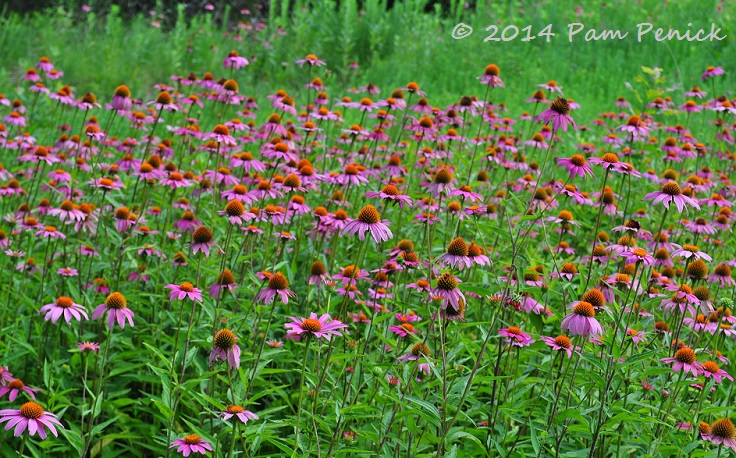
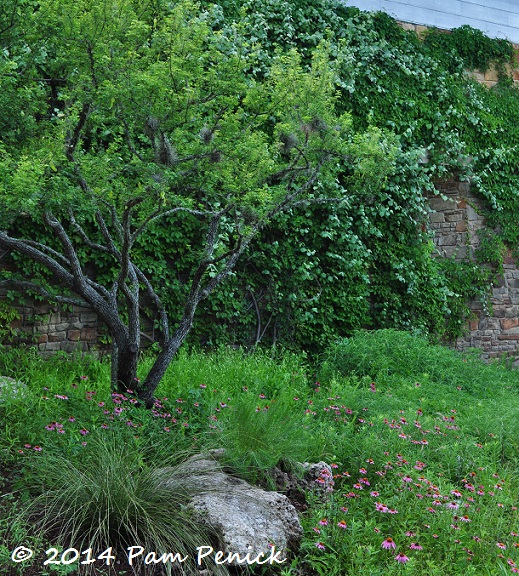
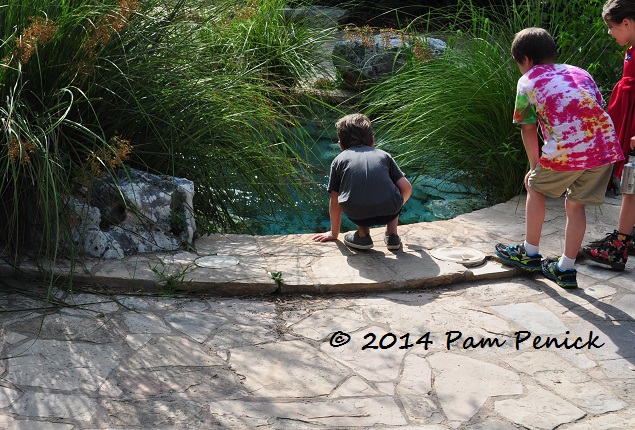
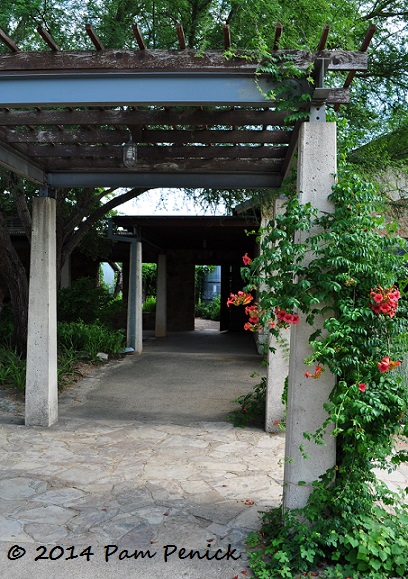
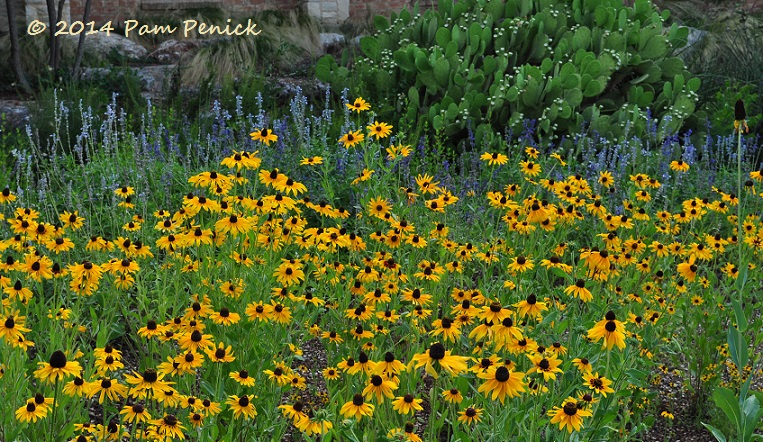
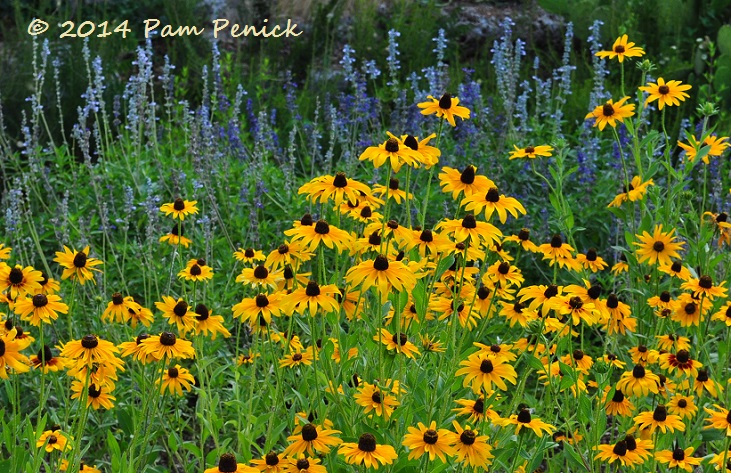
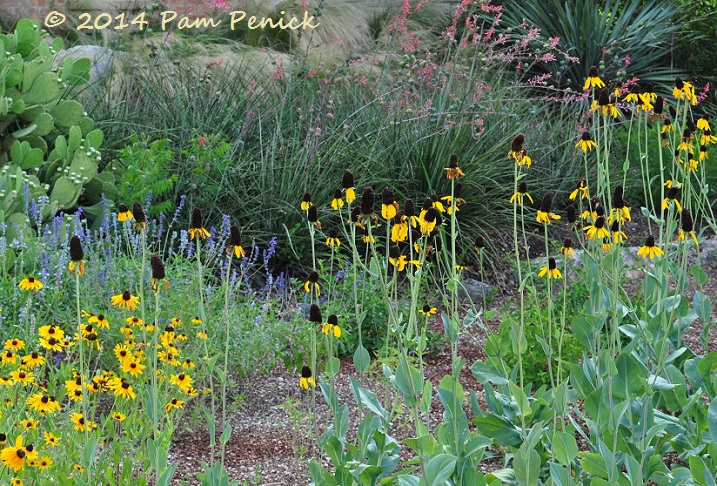
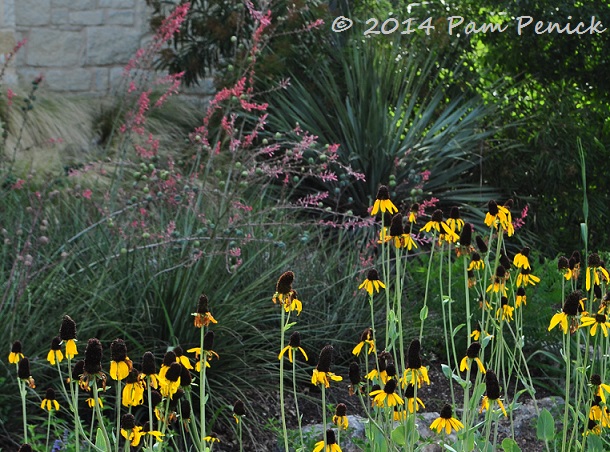
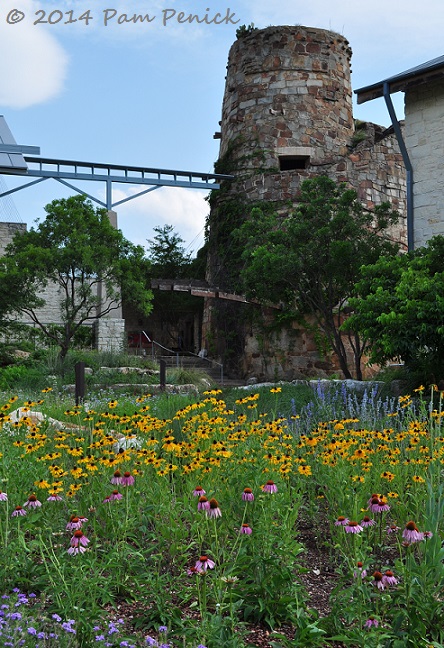
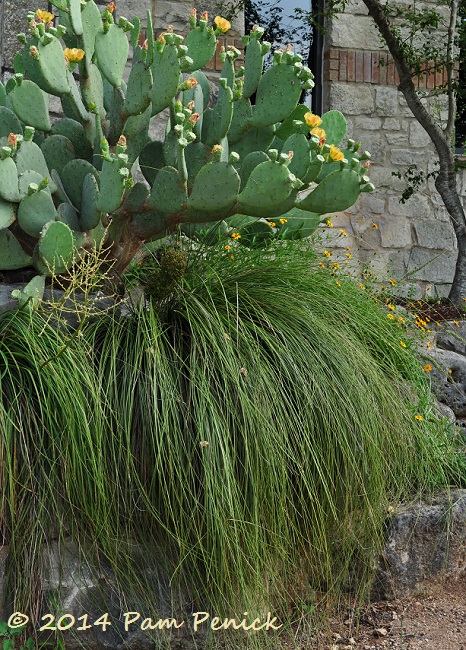
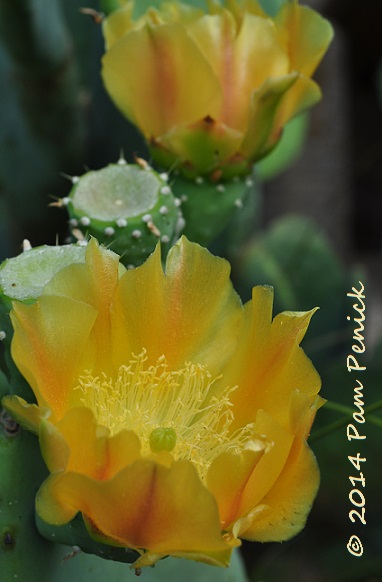
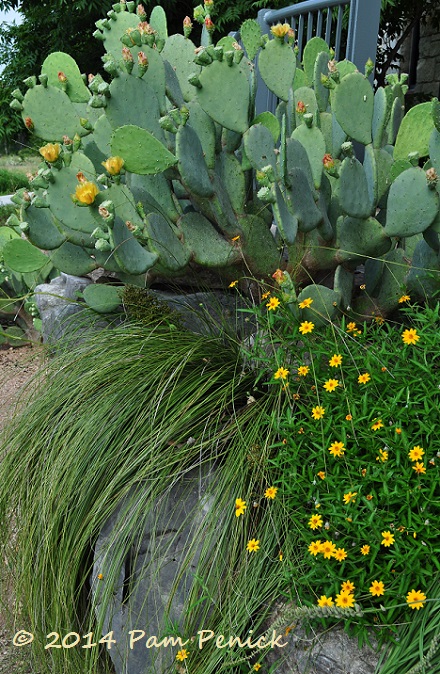
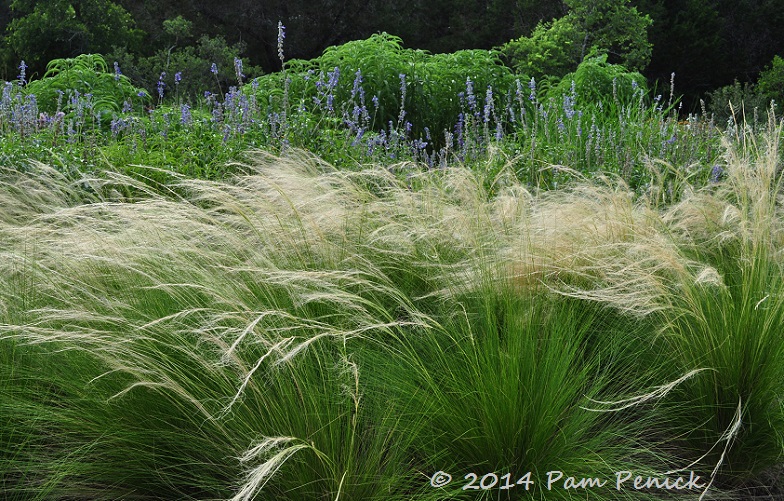
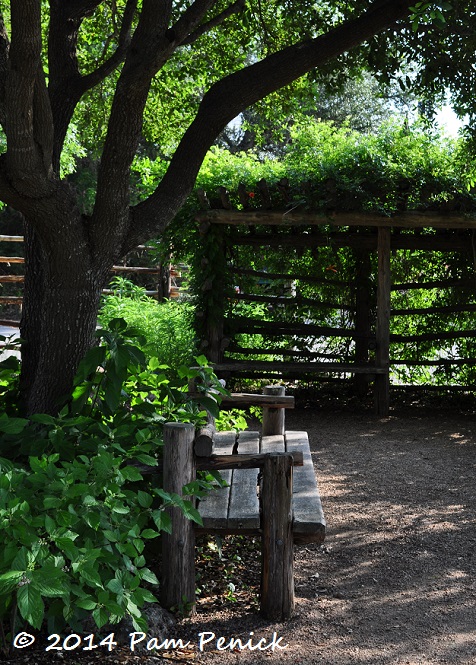
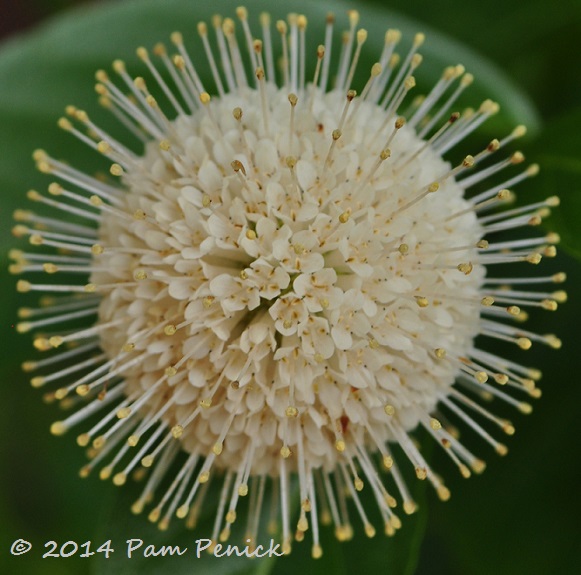
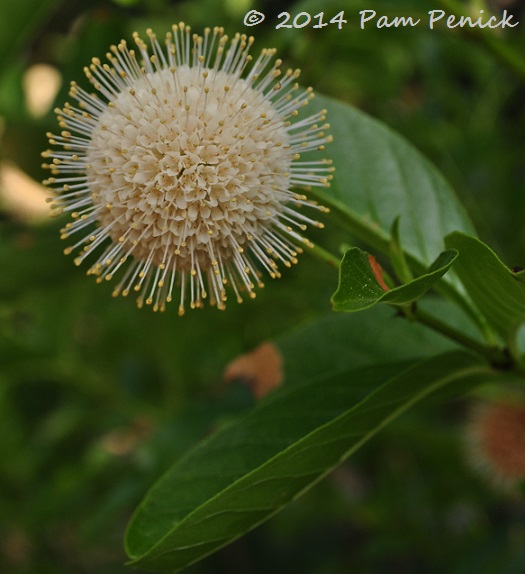
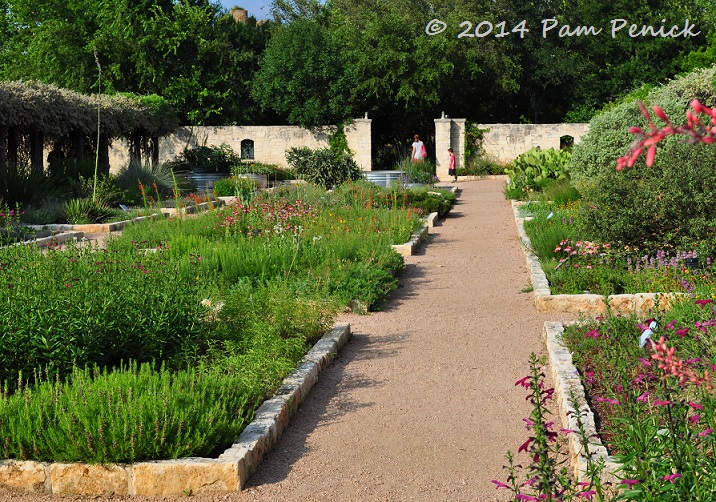
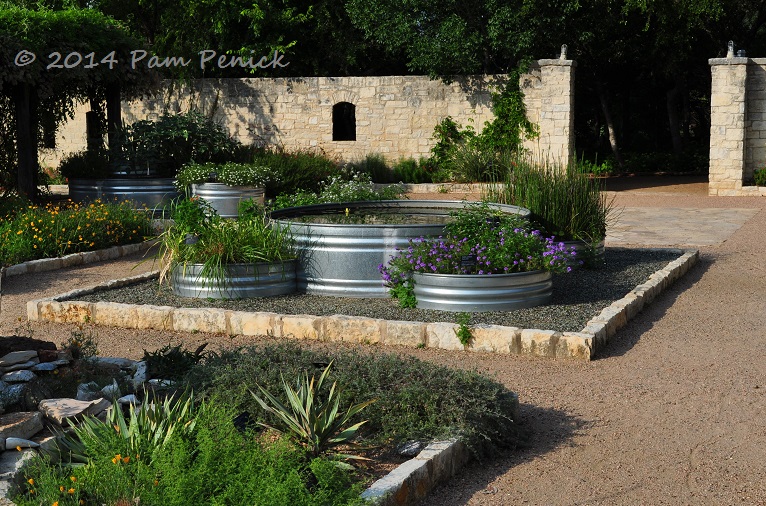
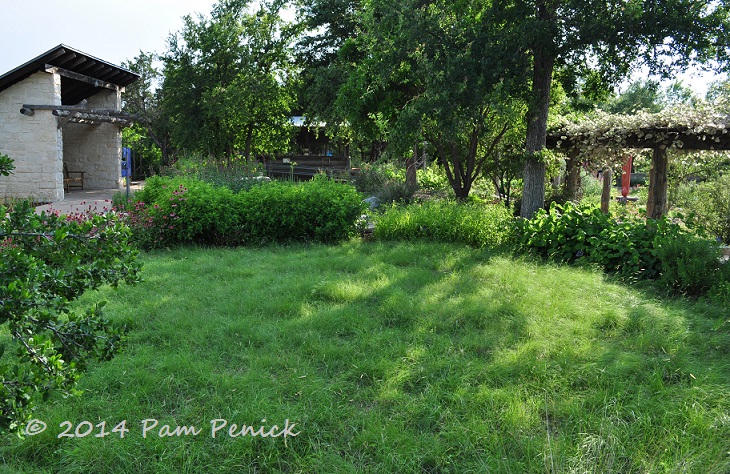
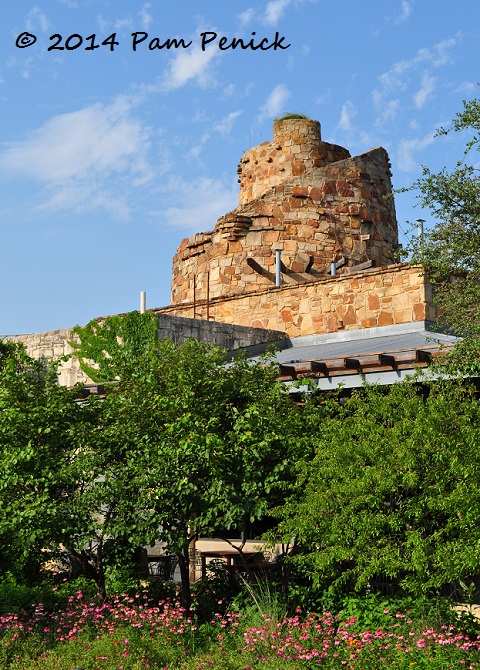
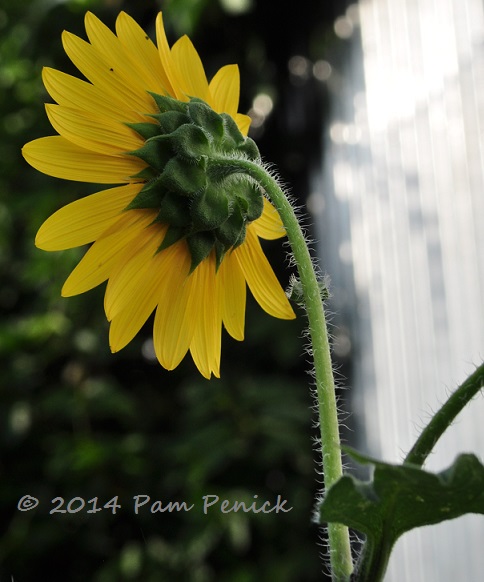
Wow, Pam, thank you for sharing…this place seems very special and I would love to see it someday. Thanks for your great pictures.
The Wildflower Center is a very meaningful place for me, Tamara, and I do hope you are able to visit one day. —Pam
“Muscular pad structure”. What an interesting (and accurate!) description. I just love the buttonbush photos! I can only imagine that if it were a more well-known plant that this shape would be a trend in interior design somehow. And that I would take part in that trend. 😉 Inspiring!
Isn’t the buttonbush flower awesome? It could be a light fixture! —Pam
What inspiration for the home owner.
Yes, indeed. I’ve certainly been inspired over the years. —Pam
Beautiful! We had a touch of those intense late afternoon/evening temperatures in May – June has been much cooler here and I hope your death star keeps it distance from us as summer progresses. Otherwise, we’ll be standing in line for an upgrade to our AC system or looking for somewhere to put a pool. In the meantime, I’m going to look into that Habiturf.
I must have timed my visit for the hottest day so far this year. Since last week it’s been much more comfortable, with highs in the upper 80s and low 90s. Much better! I hope the Habiturf will be a viable option for L.A., Kris. It looks like a winner for the hot, dry Southwestern U.S. —Pam
Just beautiful! Thanks for sharing, another inspiration for my backyard.
My pleasure, Iva! —Pam
Beautiful photos as always. Love the coneflowers, black-eyed susans, and the sunflower.
I’m glad you enjoyed the virtual visit, Jackie. —Pam
Every time I see a Nolina used so well I think I must get one and then I forget. This time it is going on my Fall Buy and Plant list right away. That button bush is so striking, too – I’m pretty sure I’d never seen one before. On the list? You betcha!
They are slow to get going, Deb, but well worth the wait, especially when grown over a slope or in a pot. They are wonderful cascaders. —Pam
It is always an inspiring place.
The button bush flowers are so fascinating, there’s one in bloom where I volunteer and we do get questions about it from visitors.
Does it bloom all summer, Shirley? It’s quite a striking flower. —Pam
Love your blog as I am a lifetime gardener. The photos are wonderful and makes me want to visit there again. I can’t take the humidity there, so visit more in Spring and fall if possible. Just wanted to mention that the tall coneflowers are Ratibida columnifera, we have them in reds here as natives and call them Mexican hats!
Thanks, Joyce. Here in central Texas we call a smaller wildflower by the name Mexican hat. I do love those descriptive common names, don’t you? —Pam